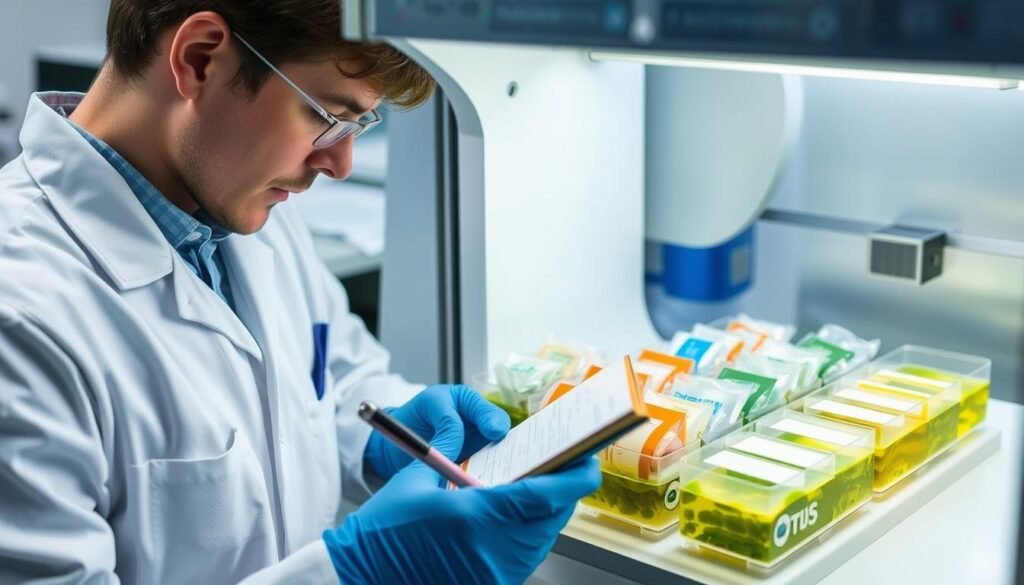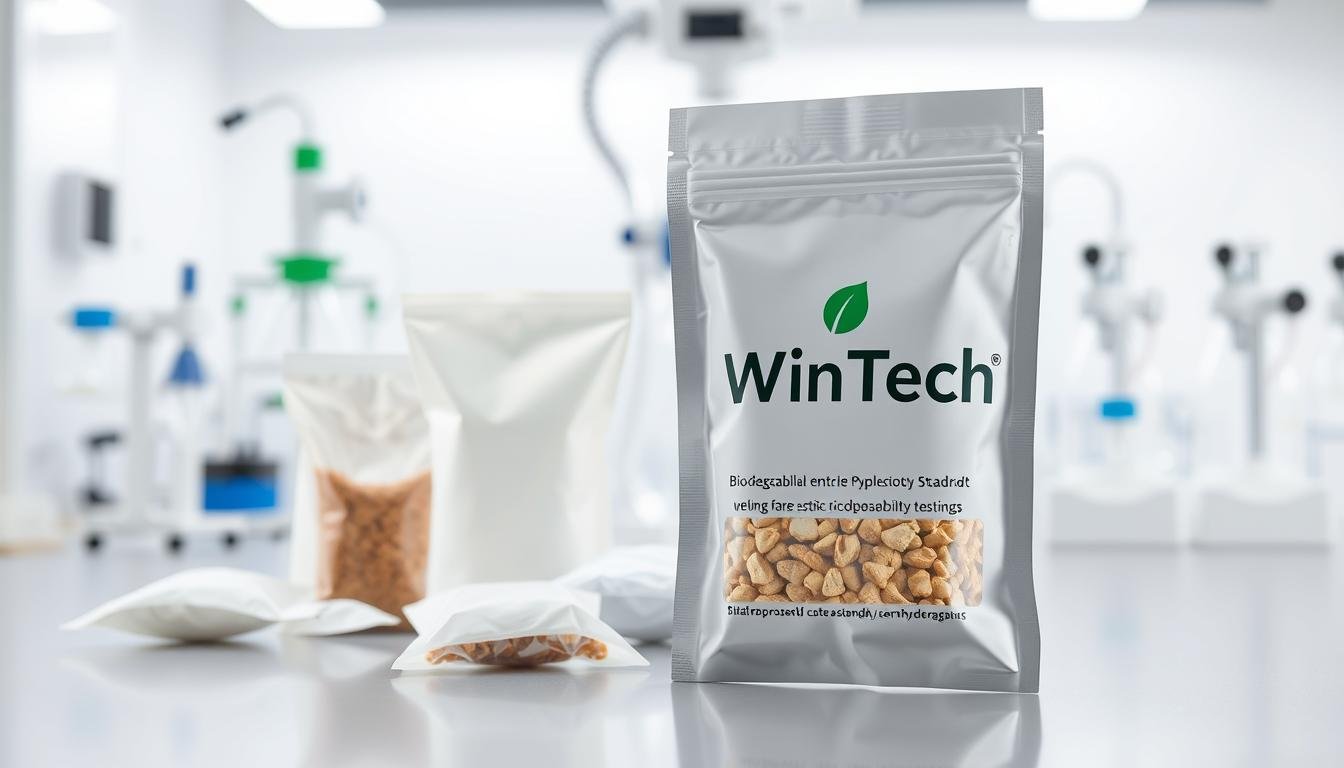Have you ever wondered what are sachets and how they’re transforming sustainable packaging solutions? Small packaging pouches have become ubiquitous across multiple industries, offering convenient single-use packets that challenge traditional product delivery methods.
What are sachets exactly? These compact containers represent a revolutionary approach to packaging, providing consumers with precise, portable product portions. From food and beverages to cosmetics and pharmaceuticals, sachets vs packets demonstrate remarkable versatility in modern consumer markets.
Understand what are sachets and how Wintech Package leads the innovation in sustainable sachet design, focusing on compostable substrates that minimize environmental impact. Their cutting-edge research explores biodegradation testing standards to ensure these small packaging pouches meet rigorous ecological requirements.
Key Takeaways
- Sachets offer innovative, compact packaging solutions across industries
- Compostable materials are transforming single-use packet design
- Environmental sustainability drives sachet packaging technology
- Biodegradation testing ensures ecological compliance
- Consumer demand pushes development of eco-friendly packaging
What Are Sachets? The Importance of Compostability
Sachets have become a versatile packaging solution across multiple industries, from tea and food to cosmetics. Understanding the what are sachets and its definition helps you appreciate their critical role in modern packaging. These small, sealed packets provide convenient, single-use containment for various products, addressing consumer needs for portability and ease of use.

The environmental impact of traditional packaging has pushed manufacturers to develop more sustainable solutions. Tea sachets, cosmetic sachets, and food sachets are now being reimagined with compostability in mind, creating a significant shift in packaging technology.
Environmental Concerns in Packaging
Single-use packaging generates substantial waste, prompting critical questions about sustainability. Manufacturers are responding by developing innovative solutions that minimize environmental footprint. The key considerations include:
- Reducing plastic waste
- Creating biodegradable materials
- Implementing circular economy principles
Sustainable Sachet Standards
Compostable sachets must meet rigorous certification standards to ensure genuine environmental benefits. These standards evaluate:
- Material composition
- Biodegradation rate
- Environmental impact
Biodegradation Testing Approach
Comprehensive testing protocols assess the complete decomposition of sachet materials. Specialized laboratories conduct precise measurements to verify compostability, ensuring that these packaging solutions truly support environmental sustainability.
Sustainable packaging is not just a trend—it’s a necessary evolution in our approach to product design and environmental responsibility.
What Are Sachets? Biodegradation Testing Standards for Compostable Substrates
Understanding the complex world of biodegradation testing is crucial for manufacturers and consumers interested in sustainable packaging solutions. Sample sachets and biodegradable sachets undergo rigorous evaluation to ensure they meet environmental standards and truly break down without harming ecosystems.

The journey of verifying compostable packaging involves multiple critical steps and sophisticated testing protocols. These assessments help determine whether biodegradable sachets can genuinely decompose under specific environmental conditions.
Overview of Biodegradation Standards
Biodegradation standards provide a comprehensive framework for evaluating packaging materials. Key organizations establish specific criteria to ensure sample sachets meet stringent environmental requirements:
- Comprehensive material composition analysis
- Decomposition rate measurements
- Environmental impact assessments
- Toxicity screening for breakdown components
Key Certification Requirements
Obtaining certification for biodegradable sachets involves meeting precise technical specifications. Manufacturers must demonstrate:
- Complete material breakdown within specified timeframes
- Minimal residual chemical content
- Safe decomposition without releasing harmful substances
- Compliance with international environmental standards
Testing Protocols and Methods
Testing biodegradable sachets requires specialized methodologies that simulate real-world decomposition environments. Industrial and home composting conditions are carefully replicated to validate the packaging’s true ecological performance.
Recognized certification bodies like the Biodegradable Products Institute (BPI) play a crucial role in validating these claims, ensuring consumers receive genuinely sustainable packaging solutions.
What Are Sachets? The Future of Sustainable Packaging
The packaging industry is experiencing a significant transformation in how sachets are designed and manufactured. What are sachets becoming in the modern sustainable landscape? These small packets are evolving from single-use plastics to innovative, environmentally conscious solutions that address critical ecological concerns.
Emerging technologies are reshaping sachet production, with bio-based materials leading the way. Manufacturers like Wintech Package are developing compostable sachets that break down more efficiently than traditional packaging. The debate between sachets vs packets is shifting toward sustainable alternatives that minimize environmental impact while maintaining product integrity.
Innovations in Sachet Materials
Recent developments in material science have introduced plant-based polymers and advanced biodegradable compounds. You’ll find new sachets crafted from renewable resources like corn starch, algae, and cellulose. These materials offer comparable performance to conventional plastics while dramatically reducing carbon footprint.
Market Trends for Compostable Sachets
Consumer demand is driving rapid changes in packaging design. Government research indicates a strong push toward sustainable packaging solutions. Your purchasing choices are encouraging brands to invest in eco-friendly technologies that support circular economy principles.
How Wintech Package Leads in Eco-Friendly Solutions
Wintech Package is at the forefront of sustainable packaging innovation. By investing in research and developing cutting-edge compostable materials, they’re demonstrating how technological advancement can create environmentally responsible packaging solutions that meet both consumer and ecological needs.

